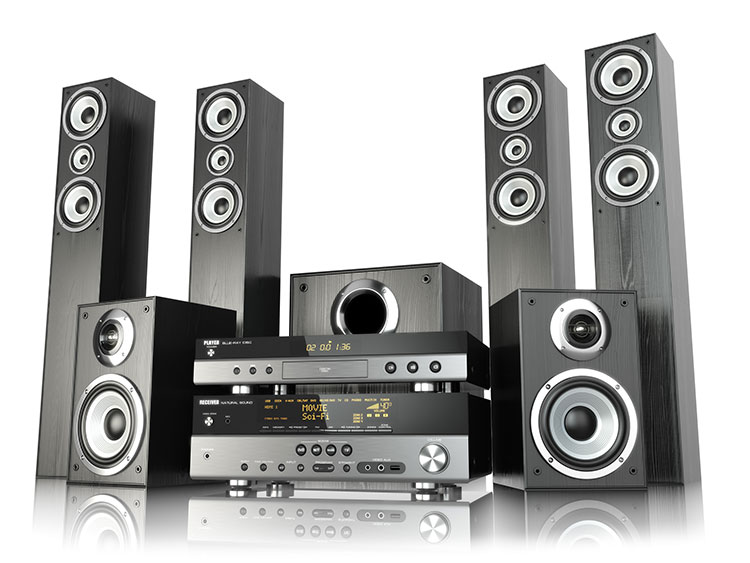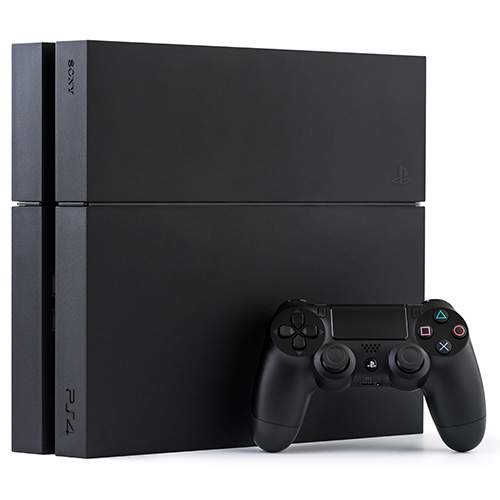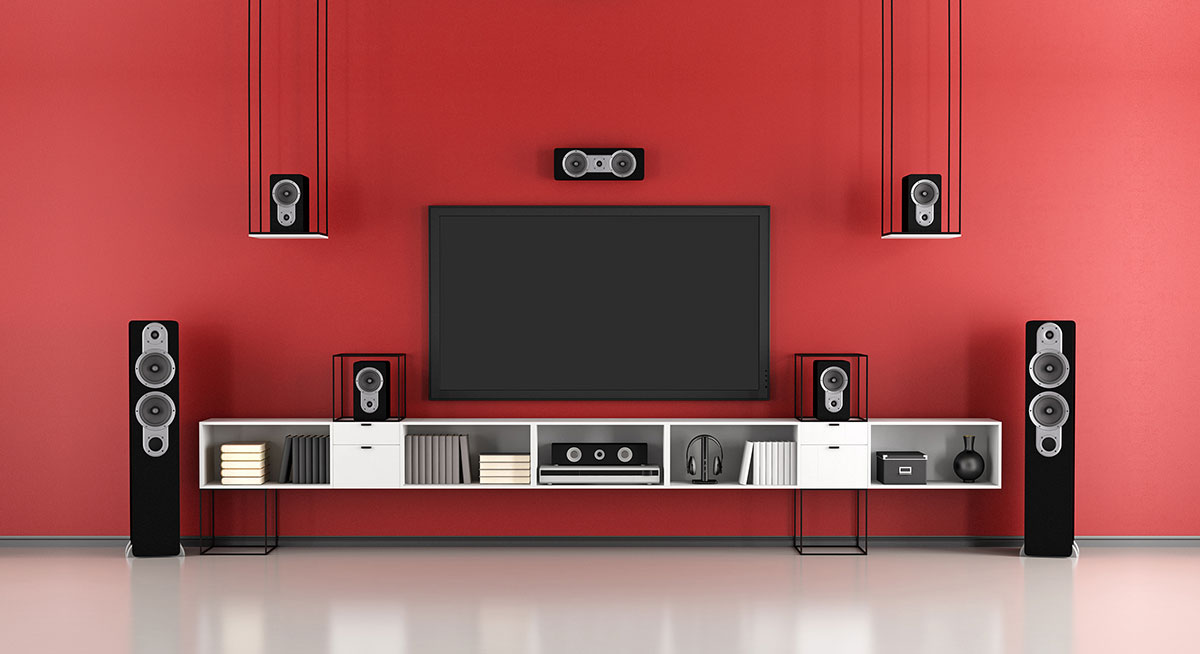With home entertainment technology getting increasingly more advanced and quite a bit more affordable than it was a couple a couple of years ago, families are spending less and less time in movie theatres and more time taking their home theatre systems to the next level.
Add to this the fact that affordable high-speed internet is on the rise and 4K streaming content is more readily available today than ever before, this just might be the best time to shell out for a great home setup.
However, there is a lot more to setting up that perfect Home Theatre than just purchasing a large TV and a pair of speakers. There is a lot to take into consideration such as the primary media source, your available space, budget, audio and video preferences, and more. Moreover, prospective home theatre buyers have an endless array of options available to them, with incredible performance right out of the box, at literally all price point. That might seem overwhelming, but do not worry. We are here to help. Just follow our simple guide and you will know exactly what to look for to get your home theatre set up and running in no time at all.
Video

The Size: The prices of TVs increase exponentially with their size so this should be a key factor to take into consideration before making your decision. For most common rooms you should aim for a size no smaller than 50”. TVs between 50-65” in size, complete with 4K resolutions, HDR, and smart features, can quite easily be found at reasonable prices today.
Resolution: Anything below 4K is best avoided, especially on large size TVs, as anything below 4K diminishes the image quality quite a bit. There are resolutions as high as 8K available today but, they are exponentially more expensive and are not worth the money currently. This is because there is little in the way of 8K content readily available.
Display Technology: For TVs there are primarily three types of displays – LED LCD, QLED, and OLED. LED LCD TVs are by far and away the most common option. These have come a long way in terms of quality, thanks to modern advancement, and easily offer the best bang for your buck. OLED (Organic Light Emitting Diode) TVs are the absolute flagships of the TV world, offering phenomenal picture quality with the truest blacks and the most vibrant colours. However, you will have to shell out quite a bit of dough for these sets. QLED (Quantum dot Light Emitting Diode) TVs are Samsung’s answer to OLED panel. They operate in a similar way to LED LCD TVs but also utilise a layer of advanced quantum dot film to amplify the colour, brightness, and contrast.
One thing to note is, if gaming is your primary source of entertainment, then you should consider a TV with low input lag and a native refresh rate of 60Hz and above. This information will almost never be readily available on the device’s packaging and will require some online research.
Audio


Channels: When putting together the best sound system, it is imperative to think about how many channels you wish to have and plan accordingly. The most basic, and also the most common, is a 5.1-channel system, with five speakers and one subwoofer. These can go up to as high as 11.2 and beyond. You can even opt for a Dolby Atmos setup with overhead speakers. But for most homes a simple 5.1 or 7.1 setup will do just fine.
Speakers: With speakers, you first have to decide which route you plan on taking – a DIY setup, where you purchase every component separately, or a Home Theatre in a Box (HTIB) where, as the name implies, includes all (or most) of the speakers needed to plug directly into the included receiver. For the more tech savvy, the former is something they would prefer. This allows you to customise your setup to your liking.
For beginners however, a DIY route is possible, but we would highly recommend taking the assistance of an expert. Alternatively, the HTIB route is a better option. Should you go for the latter we do recommend picking up a system that comes with a proper receiver as opposed to an all-in-one unit. Polk audio and Harman Kardon are amongst the more popular HTIB systems.
Home Theatre Receivers: Your receiver is the unassuming centrepiece of your Home Theatre system. This is what connects all the different elements of your system, including both input and output; ensuring everything operates as it should. There are a few things to consider before choosing a receiver. These include, the speaker setup you wish to go for, the number of HDMI inputs you need, Wi-Fi and Bluetooth connectivity, auxiliary connectors, and so forth. Do note that the same factors must be taken into account even if you decide to go down the HTIB route.
Wattage: Wattage is something you must look at with a sceptical eye since most speaker packaging can be misleading. Most manufacturers tend to slap the peak wattage on the box in bold. This is nothing more than the max power the system can produce before it fails. What truly matters is the RMS Power. This refers to the power is what your system will be able to produce more consistently during normal use. This number is usually in fine print or can be researched online for any desired system you wish to purchase.
Components
With streaming growing in popularity, digital media players and dedicated streaming devices are the most common sources of entertainment in most homes. Picking one mostly comes down to a person’s choice of subscription service and other media playback support. The most common devices include Google Chromecast, Apple TV, Amazon Firestick, Mi Box and more. Most of these are good performers and will serve your needs well. However, it is important to pick up one that best supports your home setup. After all, what is the point of having a 4k TV with HDR support if your primary streaming device only supports basic 1080p output?




Other alternatives include, gaming consoles such as the Xbox One and PlayStation 4, both of which also double as great streaming devices, or maybe even a set-top box. Another great alternative is a HTPC (Home Theatre PC) which is dedicated strictly for media viewing, and in certain cases even gaming.

